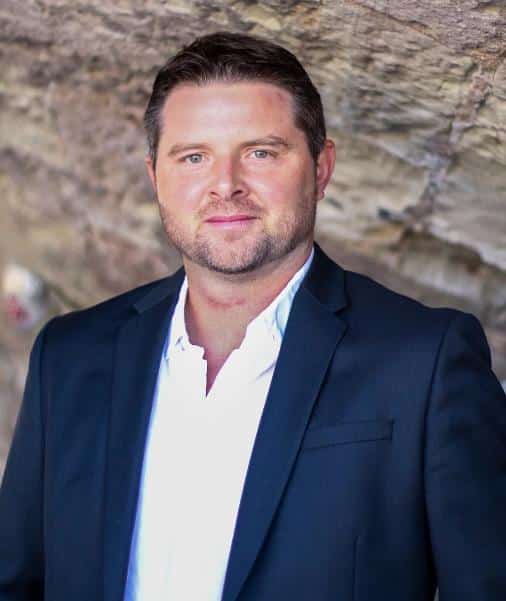Team coaching or team building? These are the two most common solutions for maximising team performance. However, the objectives, duration and framework are very different. To make the right choice, you also need to take into account the issues at stake and the maturity of the team. Charles Georg, management consultant and trainer, takes a closer look.

Team coaching and team building: what do they have in common? The basic concept is the team. For any manager or director, one of the major challenges is to develop the performance of their team. Before choosing between the two methods, the first step is to understand how a team works.
How does a team work?
According to the Tuckman modelEach team goes through five stages.
1/ Setting up the team or forming - This is the team building stage.
2/ Tensions or storming - The team may have strong differences of opinion about how to achieve its objectives. The manager will have to manage conflicts.
3/ Standardisation or norming - Little by little, the team becomes structured and accepts a common working framework. The manager facilitates negotiation.
4/ Production or performing - Team members work collectively towards a common goal. The manager supports their motivation.
5/ Dissolution of the team or mourning - Once the objectives have been achieved, the manager rewards the work done.
The objectives of any director or manager should therefore be to :
- maximise your team's performance in each phase ;
- move it from phase to phase;
- take it as quickly as possible to phase 4 "performing", where it can obtain the status ofhigh performance team.
Without a clear definition, a high performance team could be described as one that regularly exceeds expected results. But getting to this stage is not easy. Many difficulties can arise at each stage: lack of communication or trust, virulently expressed disagreements, demotivation, application of different rules or procedures, different understanding of objectives or priorities, etc.
Leaders and managers are therefore looking for ways to overcome the difficulties that hamper team performance. The best-known solutions are team coaching and team building. But how do you make the right choice?
Team coaching: moving in the same direction
Team or group coaching consists of facilitating and challenging a team, including the manager. All team members are interdependent. They work together to achieve common objectives, against which the team's performance is assessed.
Duration: generally, several months with regular sessions.
Team coaches help teams to make the most of their resources. In other words, to capitalise on their strengths to improve processes, relationships and performance.
Team coaching helps to improve teamwork, build trust, resolve conflicts and develop empathy and commitment. The ultimate goal? Optimising team performance to achieve corporate objectives.
Case studies
Real-life customer situation
Anna, a director, wanted to create a meaningful alliance between 14 managers from two different divisions of a service company. The starting point was to bring them together around the company's raison d'être. This should ensure that everyone's efforts are heading in the same direction.
Expected end result
- Reaffirming the company's culture, values and mission to its employees and customers
- Establishing a convincing vision and strategy and translating them into operational objectives
- Improve coordination and collaboration between the two sectors in terms of customer offerings
- Developing creativity
- Giving meaning and motivation back to teams
- Enhancing the company's added value
- Improving the climate by uncovering hidden conflicts and managing them constructively
- Accelerate change through clear action plans involving interdependent actions within the management team or with the environment
Solution implemented and concrete results
Various coaching sessions are therefore being set up, spread over a period of 8 months.
This enables managers to :
1/ Redefine the raison d'être of these two business units, what makes them unique, original, value-added, their identity and their operational values.
In the form of workshops, the teams in each division reflect on their successes, strengths, pride and victories. They discover that they share common values. At the end of this first phase of team coaching, they commit to implementing actions that are consistent with what motivates them.
2/ Uniting the two centres around a new, shared sustainable project
The teams are asked to provide concrete answers to the following questions: "In a year's time, what will you have achieved? In concrete terms, what will that mean? They draw up an "objectives tree" with deliverables based on a shared vision. They focus on the strategic and operational stages. This joint quality project strengthens the teams' thinking, cooperation, validation, support and commitment.
3/ Developing team creativity
Team coaching and collective intelligence workshops using different types of brainstorming and world cafés are organised to innovate and develop the maturity of the teams. Phases of divergence and convergence of ideas follow one another.
This strengthens interaction and listening.
Team building: recharging the team with positive energy
Team building enables people who work together to share a professional and educational experience. As the name suggests, it is about team building.
Participants do not need to achieve common objectives for which they are interdependent. Instead, they share a need for communicationproblem-solving, or simply to generate good atmosphere. Team building gives them the opportunity to get to know each other better and charges the team with positive energy. It enables all team members to develop a new skill or a global vision of a subject at the same time. It does not, however, resolve conflicts.
Team building activities are on an occasional basis, often in an informal setting. They complement team meetings and company-wide events.
In team building, the trainer joins forces with the manager and the team to build the process and the team. create an environment conducive to exchange and creativity. To do this, it uses exercises, games and teaching activities that generate pleasure, sometimes in a competitive context for added stimulation, etc.
Case studies
Real-life customer situation
Geoffrey is managing director of an industrial subsidiary with around a hundred employees. For several months now, he has been noticing increasing tensions within the production teams. This has resulted in verbal clashes, repeated work stoppages and resignations.
On the one hand, the highly technically skilled team members, who are responsible for the finished product, come up against recurring mechanical and operational problems that bring the production line to a temporary and repetitive halt. On the other, the N+1, N+2 and Geoffrey are under pressure from shareholders, quality, the market, strong competition, sales to be achieved and the company's long-term future to be guaranteed.
Customer objectives
- Creating a team spirit, adopting and maintaining a positive attitude
- Strengthening team dynamics (trust and involvement)
- Getting to know each other better, restoring balance and welcoming new members
- Eliminate the notion of hierarchy by putting everyone on the same level
- Developing a vision, giving meaning and aligning the team with objectives
- Improving communication
- Having a good time together
Solution implemented
What is it?
- Stimulating activities focusing on problem-solving in a fun way
- Debriefings dedicated to each of the customer's specific issues after each activity to reinforce the customer's commitment to the project. team cohesion
Where?
- In a country château, in the green
When?
- A day and a half
The last half-day is devoted to the company's three-year vision and development plan, detailed explanations of the strategy to be deployed and a collective intelligence workshop on the concrete actions to be taken by employees to achieve the strategic objectives.
Concrete results
Geoffrey is delighted with the general atmosphere, and notes the development of a sense of cohesion among the staff. The most important messages got across. The employees came up with innovative and feasible solutions. Moral commitments have been made. In Geoffrey's view, the objectives have been achieved and even exceeded.
Satisfaction on the employee side too.
They have :
- actively taking part in the various challenges, whether creative, thought-provoking, construction-related or physical;
- appreciate teaming up with their N+1 and N+2, "rather intimidating at first, but enjoyable in the end".which may have "breaking down certain barriers ;
- validated the vision, which was well communicated to them.
Another positive point: to suggest areas for improvement. Many employees have finally "discovered colleagues, put heads to names".which makes a major contribution to cohesion.
Team coaching or team building? Let's sum it up!
To sum up, here are the major differences between team coaching and team building. The choice will depend on the situation, maturity and challenges of each team!
Team coaching
Main objectives: overall team performance, conflict resolution
Secondary objectives: creating trust between team members, aligning the team, developing empathy and commitment
Duration : several months, with regular sessions
Frame : formal, meeting room
Team building
Main objectives: communication, problem-solving, developing a new skill or gaining a global view of a subject
Secondary objectives: generate a good atmosphere, get to know each other better, raise awareness of the importance and processes of team spirit, charge the team with positive energy
Duration : occasional one- or two-day visits
Frame : informal, indoors or outdoors, outside company premises




